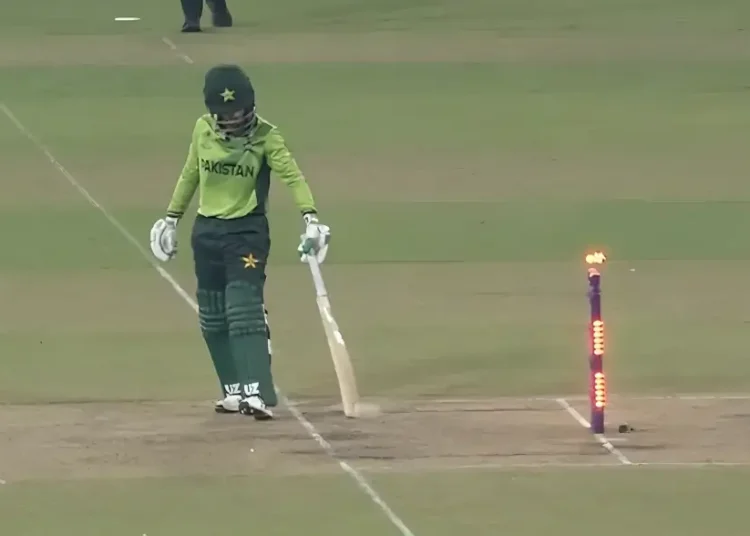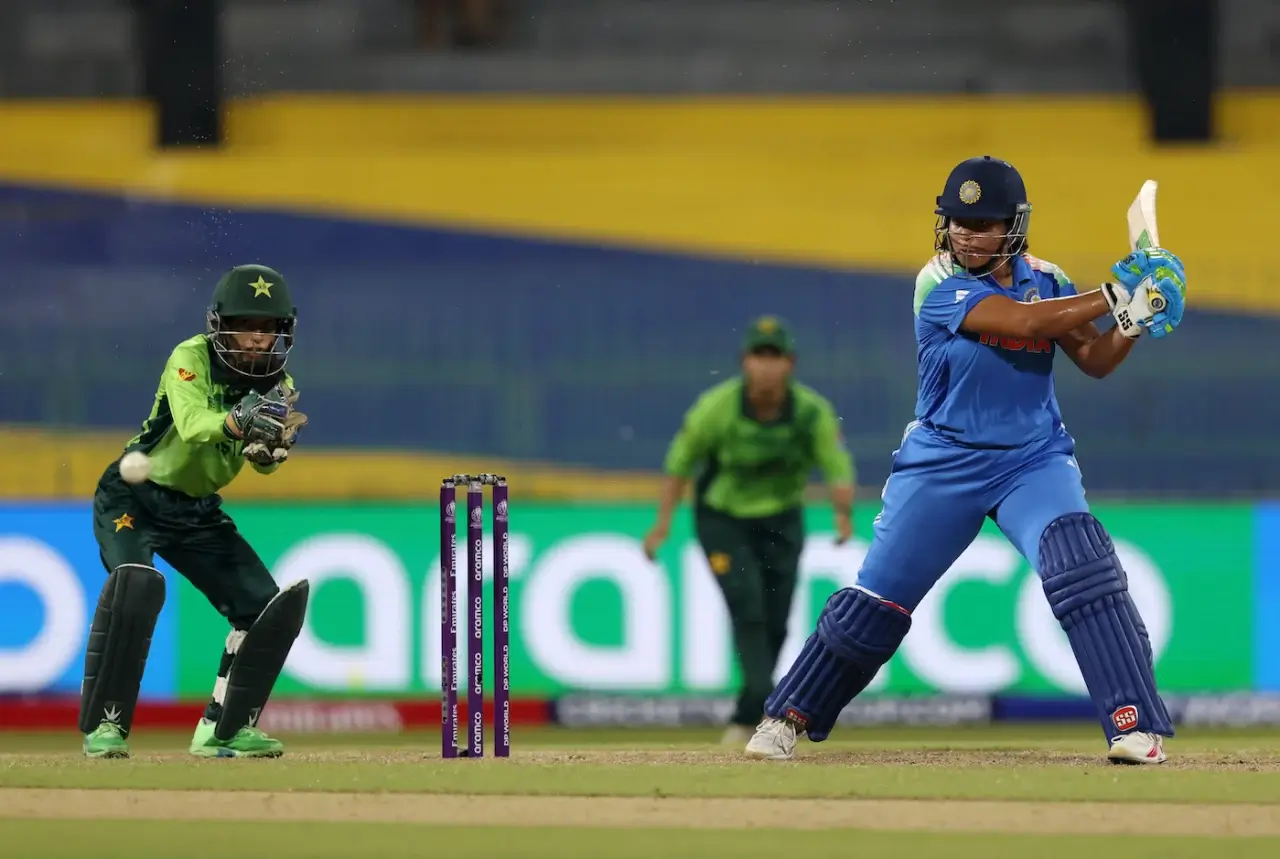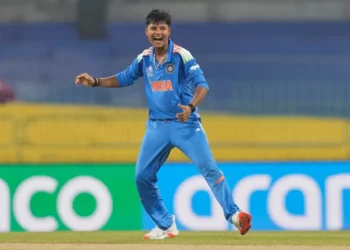India posted 247 at Premadasa, building a defendable total today. Harleen Deol anchored innings with a composed forty-six runs effort. Richa Ghosh finished unbeaten thirty-five, changing the late innings momentum. Pakistan bowlers applied pressure, creating many dot-ball phases across innings. A swarm of insects halted play for about fifteen minutes. Ground staff fumigated the area to restore safe playing conditions. Muneeba Ali’s run-out became the match’s most debated public moment. Initial third-umpire visuals showed not out before reversal on-screen confusion, like the Bangladesh team.
Replays later revealed Muneeba lifted her bat before throw again. Deepti Sharma’s accurate return hit the stumps instantly thereafter direct. The third umpire used sequential replays to re-evaluate the decision. ICC playing condition thirty point one point two guided the ruling.
That rule protects batters when running or diving toward the crease specifically. Muneeba did not show any running momentum towards her ground. Officials explained the interpretation after discussing replay angles public statement. Pakistan queried the decision immediately and sought clarifications from umpires.
The confusion delayed play and prompted heated on-field discussions among players. Despite controversy, India maintained intensity and applied consistent pressure throughout. Deepti Sharma’s fielding intensity and accuracy swung momentum back to India. India sealed victory by eighty-eight runs with composed bowling finish.
The Muneeba Ali run-out and DRS confusion
The dismissal sequence began with Muneeba moving slightly out of her crease visible. She grounded her bat within the crease before the appeal and subsequent play sequence replays. Television replays initially showed her grounded bat, prompting the on-screen not out call briefly displayed. Later frames captured Muneeba raising her bat briefly before Deepti’s return hit stumps directly seen.
Third umpire Kerrin Klaaste reviewed multiple angles under high-pressure conditions before confirming out after deliberation. The fourth umpire Kim Cotton assisted with clarifications during on-field deliberations to ensure correct decision. Broadcasters displayed conflicting graphics, which added public confusion and frustration through inconsistent replay frames messages. The playing condition thirty point one point two was central to the ruling interpretation during reviews.
That law covers batters running or diving toward their ground for safety and protects accidental displacements. Umpires concluded Muneeba did not exhibit running momentum toward her ground so dismissal was adjudicated accordingly. Pakistan felt aggrieved and sought immediate on-field answers from officials before resuming play under heavy scrutiny. The episode highlights the need for clearer replay sequencing and faster communication among officials broadcasters now.
Rules, replay checks and practical steps
ICC law protects batters only when running toward their ground specifically. The exception does not cover stepping back inside the popping crease. Replay clarity depends on sequential frames and multiple camera angles availability. Broadcasters must align feed timing with umpire review protocols precisely now.
Fourth umpire input helps coordinate off-field and on-field information streams effectively. Teams should train for rare scenarios involving crease and grounding rules regularly. Coaches must practise clear communication and instant decision drills regularly now. Umpires can publish brief explanations after controversial decisions to improve transparency.
Broadcasters need delay buffers to capture full sequential frames for reviews effectively. Fans benefit when officials explain timing and reasoning behind crucial calls. A standardised replay checklist could reduce future on-field confusion significantly today. This incident will likely prompt procedural reviews across cricket boards globally.
How did the match unfold, and what was India’s 88-run margin?
India’s innings relied on patience early and late aggression at the end. Harleen’s steady forty-six anchored the middle overs and absorbed persistent pressure. Jemimah and Sneh offered starts but couldn’t convert into sustained partnerships regularly. Richa’s late blitz added crucial eighteen to twenty-plus run overs at the finish.
Pakistan bowled smart lines with spin and seam to force errors regularly. Diana Baig took key wickets while Fatima Sana stifled openers with control. Sadia Iqbal and Nashra Sandhu used variations and arm-balls to restrict scoring. The insect delay briefly tested both sides but did not alter competitive intensity.
Early in the chase, Muneeba’s run-out unsettled Pakistan’s top order rapidly. That dismissal left Pakistan six for one and increased scoreboard pressure immediately. Deepti Sharma and Kranti Goud then executed disciplined plans with accurate bowling. Fielding standards and sharp direct hits converted half-chances into wickets for India.
India’s bowlers maintained consistent lines and executed plans under pressure today. Pakistan fought back occasionally but lacked sustained partnerships when needed most. The match ended with India winning by eighty-eight runs, scoreboard reflecting dominance. Selectors will study both the dismissal sequence and tactical execution for lessons.
Tactical lessons and coaching priorities
Running awareness drills must become routine in international training schedules now. Teams should rehearse replays, DRS usage, and on-field communication under time pressure. Fielding drills that include direct-hit practice will reduce dismissals like Muneeba’s in future. Coaches need to simulate broadcast replay timing to prepare players for reviews.
Umpires and broadcasters should create shared protocols to avoid contradictory on-screen displays. A transparent, short explanation after controversial calls helps calm players and public quickly. Governance bodies could issue quick reference guides about playing condition 30.1.2 for broadcasters. That step would reduce confusion and improve public understanding of complex run-out laws.
Pakistan must prioritise building long partnerships and rotating strike under pressure. India will continue valuing lower-order finishers like Richa Ghosh late blitz for close games. Small margins decide tournament fortunes, so process improvements matter for all teams. Practical training and better replay workflows will protect fairness while preserving game flow.
Conclusion
The Muneeba Ali run-out will be analysed for procedural clarity widely shortly. Clearer replay workflows and communications must be prioritised by stakeholders immediately today. Pakistan should reinforce crease awareness and running protocols in practice regularly immediately. India will take confidence from composed bowling and sharp fielding today certainly.
Richa Ghosh’s late blitz highlighted importance of finishers in ODIs today strongly. Harleen Deol’s steady forty-six provided the required middle-order stability through effort today. Match officials should explain decisions promptly to preserve public trust today again. Broadcasters must coordinate with match referees to avoid conflicting screens immediately today.
Fans deserve transparent, consistent replay processes across major international matches every time. This contest reinforced cricket’s need for precision in small margins regularly now. Coaches will study running laws and DRS sequences during sessions over weeks. The scoreboard reads India 247 and Pakistan 159; see timeline context here.
Selectors will note Richa’s finishing ability for future squad planning closely today. Muneeba’s dismissal will be part of coaching videos and reviews thereafter. Cricket must balance strict law application with transparent public communication regularly now. Overall India’s 88-run win showcased discipline, depth, and finishing ability today certainly.
















